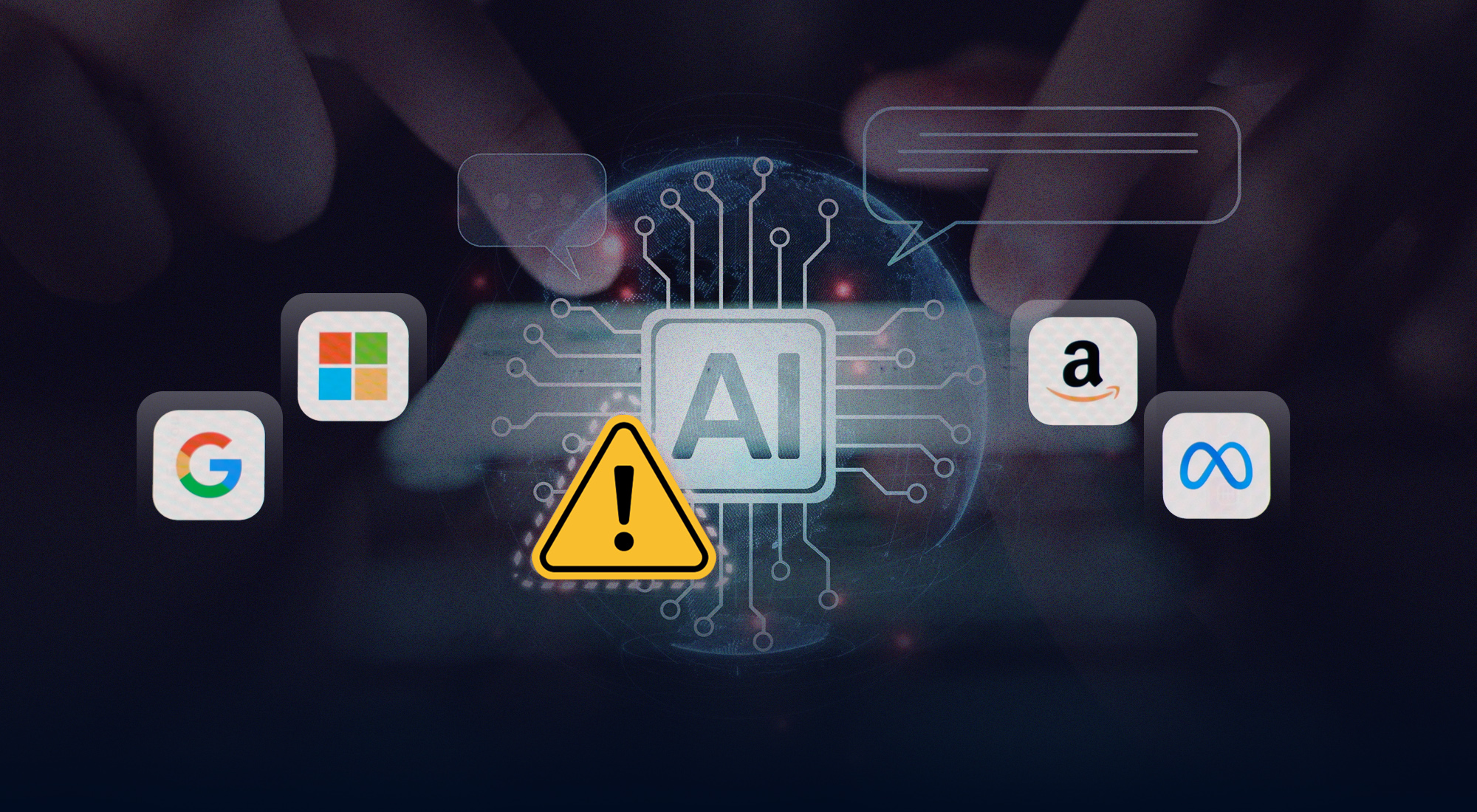Cryptocurrencies are digital tokens intended as moneys controlled not by centralized entities like states or central banks, but by decentralized, internet-based networks. Rather than third-party intermediaries backing most existing currencies, cryptocurrency users verify token transactions amongst themselves. Once ensured that tokens have not been ‘double spent’, confirmations of digital transactions are bundled together into ‘blocks’. Sequentially linked to one another, ‘blocks’ of verified cryptocurrency transactions form a ‘chain’ or ledger. What is essentially a database of token transactions is distributed amongst all network users. Users must arrive at a consensus if and when the ‘blockchain’ underlying cryptocurrencies is altered.
Since the creation of Bitcoin in 2009, predictions have abounded that the first and still most prominent cryptocurrency would either usurp or extend state sovereignty. The bypassing of state-regulated banks and national central banks underpinned both hopes and fears regarding the ability of governments to control monetary sovereignty, as well as control a seemingly ever-widening array of activities that distributed digital ledgers underpinning cryptocurrencies have come to underpin, from digital art markets to fan engagement in sports.[1]
How has the advent and expansion of cryptocurrencies affected sovereignty? We argue that what has materialized is the extension and disaggregation of state sovereignty and that this paradoxical set of developments has important implications for understanding sovereignty in contemporary world affairs. We first synthesize the flurry of claims regarding what this set of technologies portend for sovereignty. We then outline five forms of sovereignty that the past decade of experimentation with this technology has both sparked and extended. We conclude by contemplating what these trends entail for sovereignty in 21st century international relations.
Expectations Met?
Take a small step back in time to the turn of the millennium. The expansion of the internet, as well as ongoing globalization of the world economy throughout the 1990s sparked growing talk of a “new sovereignty”.[2] Traditionally, sovereignty entailed exclusive abilities to control activities within a geographically determined jurisdiction. Beyond exclusive territorial domains, nation-state sovereignty was typically understood as involving equal relations between countries, such as via the formal practice of diplomacy. Yet as large corporations and individual billionaires gained the ability to control activities in and across national jurisdictions, such state-centered sovereignty become part of a wider “landscape marked by scattered de facto mini-sovereignties in a vast system of often loose overlapping jurisdictions”.[3] Along with a resurgence of interest in concepts such as neo-medievalism,[4] the new sovereignty emphasized the disaggregation of state sovereignty and pluralization of sovereignties.
How was the advent of Bitcoin, a decade into the new millennium, seen as affecting this ‘disaggregation’ of sovereignty? On the one hand, predictions have been made that cryptocurrencies will extend the disaggregation of state-based sovereignty. These claims have not just been prominently made by designers and backers of these technologies, but also by legal theorists and other scholars.[5] On the other hand, cryptocurrencies and their underlying blockchain applications have also been predicted to reinforce traditional state sovereignty. Nation-states around the world have taken up Bitcoin’s underlying blockchain technology, particularly those under varying forms of international sanctions by the US, EU and United Nations.
A dozen years following the advent of Bitcoin, initial expectations of cryptocurrencies either usurping or extending forms of nation-state sovereignty were, we contend, wrong. Instead, as we proceed to argue, a decade plus of experimentation with cryptocurrencies and their underlying blockchain technology has catalyzed both the expansion of state sovereignty and widening of non-state sovereignties.
Five Sovereignties in the ‘Block-Age’
In an article examining “The future of sovereignty in a blockchain world”, Sarah Manski and Ben Manski propose what they call “five possible blockchain futures”: technology individual, popular, technological, corporate, and techno-totalitarian state sovereignty.[6] By building on and tweaking these, we identify five sovereignties exerted in the dozen years since the advent of Bitcoin.
A first form of sovereignty catalyzed by the advent of Bitcoin in 2009 is financial. The white paper outlining the design for Bitcoin as a “peer-to-peer electronic cash system” did not mention specifically either blockchain or sovereignty.[7] However, at its core, Bitcoin provided a new avenue for global financial relations to occur beyond existing third-party intermediary institutions like banks. This alternative ‘space’, as it is often called, has enabled geographically dispersed individuals to not only exchange, but to create and experiment with so-called decentralized finance (DeFi) in ways that are often highly restricted to professionals – for good or ill – in more traditional centralized finance (CeFi). Indeed, as many have noted, it was far from coincidental that the original Bitcoin white paper was circulated at the height of the most severe global financial crisis since the Great Depression. The still unidentified author(s) of this document proposed bypassing the central intermediaries – banks and central banks – that were and had been continually implicated in volatilities and crises.
A second type of sovereignty that has been heightened since the arrival of Bitcoin is individual. The “libertarian vision”[8] and “right-wing extremism”[9], present in the communities developing and initially utilizing Bitcoin, sought what political economists have identified as “individual sovereignty, private property, and free/open markets”.[10] Such individual sovereignty is equally reflected in projects expanding Bitcoin’s underlying blockchain technology beyond financial relations. For instance, through its “internet of sovereignty”, BitNation provides individuals with the ability to create their own “voluntary nations” through “DIY governance” tools.[11] So-called “self-sovereign” digital identities based on blockchain, meanwhile, attempt to allow individuals to “manage their own information” granting them “full agency”.[12] A further example of individual sovereignty is Holochain, which seeks “to achieve regenerative value accounting” or “holoptical” knowledge accounting systems.[13] Through an “agent-centric” design, “the user controls their data and identity information”. Holochain-based “personas” or users are “given sovereign control over their data and are solely responsible for granting permissions”.
A third form of sovereignty that Bitcoin has extended since 2009 is socio-technical. Once designed and released ‘into the wild’, technologically complex blockchain-based projects typically remain governed by small cliques of developers. Decision-making in most cryptocurrencies is ultimately a constrained affair led by what is often “nothing more than a private club” that encodes rules in the applications of these digital technologies.[14] Even the most ‘autonomous’ of blockchain applications – so-called decentralized autonomous organizations (DAOs) – are continually shaped by humans. The first such project, called The DAO, had a leading developer ‘intervene’ in its code after a hack spurred a call for action by the wider user community.[15] This iterative co-evolution between human coders and their ‘autonomous’ creations is best understood as a form of “co-production” of a shared socio-technical sovereignty.[16]
Corporate sector sovereignty is a fourth form of control furthered by the advent of Bitcoin in 2009. The growing usage of the first cryptocurrency rapidly sparked demand for new corporate intermediaries: fiat-to-cryptocurrency exchanges. A whole host of exchanges between CeFi and DeFi worlds were rapidly established, including the infamous Mt. Gox, which in 2014 announced that it had lost nearly a half a billion dollars’ worth of Bitcoin over three years. The trials and tribulations of these new intermediaries led to the creation of further intermediaries serving as partners to facilitate interactions between cryptocurrencies and state-backed fiat moneys. For example, a host of blockchain intelligence firms like Chainalysis work with exchanges to ensure that transactions do not involve laundered money or facilitate crime or terrorism. These relations are replicated by other intermediary firms increasingly offering cryptocurrency and blockchain services, but rarely doing so entirely on their own. Even the likes of Amazon Web Services have established formal partnerships and informal links with a host of other smaller corporations in offering blockchain services.[17]
Perhaps the most prominent example of corporate sovereignty being extended collectively through cryptocurrency and blockchain activities since 2009 is Diem. This ambitious project, originally called Libra, has been led but not entirely controlled by Facebook. The original Libra Association included financial giants, like Mastercard, and a host of tech firms.[18] Diem continues to be a collective organization consisting of corporations from various sectors, including music (Spotify) and transportation (Uber).[19] In 2021, Diem also chose a rival cryptocurrency to launch a digital wallet called Novi after regulators in the United States once again pushed back on its own ‘stablecoin’ consisting of a basket of national currencies. This example also brings us full circle back to state sovereignty, which has not disappeared in the flurry of other sovereignties extended in cryptocurrency and blockchain activities since 2009.
Countries sanctioned by the United States and European Union were some of the first to adopt cryptocurrencies. Most prominently, the Venezuelan government launched a cryptocurrency called the Petro in 2018 as part of an explicit effort to “overcome the [US] financial blockade”,[20] as well as to “advance in issues of monetary sovereignty, to make financial transactions and overcome the financial blockade”.[21] The Chinese government launched its Blockchain Service Network (BSN) in March 2020 to coordinate trials of the technology that have most prominently included the first major Central Bank Digital Currency (CBDC). Formally called the Digital Currency Electronic Payment (DCEP), the digital yuan was broadly framed as an effort to enhance the country’s national sovereignty (. Similarly, the Russian government began developing a digital ruble in 2018. As then economic adviser to President Putin Sergei Glazyev put it the goal is to “settle accounts with our counterparties all over the world with no regard for sanctions”.[22] A prototype e-ruble is slated for trial between Russian banks in a “mega-project”[23] geared to becoming an “integral part of national settlements by 2023 or 2024”.[24]
Not to be outdone, leading sanctioning states have also sought to develop their own ‘national cryptocurrencies’ and taken up blockchain services, albeit in a far slower and more careful manner, coordinated through international institutions like the Organization for Economic Co-operation and Development.[25] Both the US and the EU are contemplating the development of their own CBDCs through the Digital Dollar Project and public consultation about a digital euro.[26] In the meantime, American authorities have funded the expansion of the type of blockchain analytics firms mentioned above. The US Department of Homeland Security has contracted the “real-time suspicious cryptocurrency transaction alert system” of the aforementioned blockchain company, Chainalysis. The Department of Homeland Security Illicit Finance and Proceeds Crime Unit also employs the services of the Canada-based Blockchain Intelligence Group, which “enables investigators to quickly and visually follow the virtual money”.[27]
What exactly these trends will eventually culminate in remains unknown. What we can say at present, however, is that state sovereignty is not disappearing but being extended in various manners through cryptocurrencies and blockchain technologies.
Understanding Contemporary Sovereignty as Multiple and Interrelated
The advent of Bitcoin sparked more than a decade of technological experimentation. We have argued here that experiments with these digital tokens and their underlying blockchain technologies have both extended and further disaggregated state sovereignty. Financial, individual, socio-technical and corporate sector sovereignties now exist alongside state sovereignty, which contrary to some expectations, has not been usurped. These developments call not only for multiple sovereignties to be recognized, but for them to be understood in relation to one another, in a more complex and nuanced manner.
For example, the new forms of financial sovereignty spurred by Bitcoin co-exist with older corporate sector sovereignties. Banks and other longstanding financial intermediaries have become increasingly involved not only in blockchain-based experiments with improving back-office transaction settlement, but also in facilitating front-end trading of cryptocurrencies themselves. How ‘new’ and ‘old’ sovereignties interact by supporting or undercutting one another needs further consideration. Not dissimilarly, what we identify as individual forms of sovereignty enabled by blockchain, such as ‘self-sovereign identities’, operate in close evolution relations with applications of blockchain technologies often controlled in turn by small cliques of developers or what we call socio-technical sovereignty. How these two forms of sovereignty are asserted in relation not only with one another but also with the trio of other sovereignties explored here requires further contemplation.
In sum, whether or not we are still talking about cryptocurrencies in a decade from now, it will be important to recognize and understand their impacts on catalysing more complex, varied, relational notions of sovereignty in the ‘block-age’.[28]
References:
[1] Zeilinger, M., 2018. Digital art as ‘monetised graphics’: Enforcing intellectual property on the blockchain. Philosophy & Technology, 31(1), pp.15-41; Campbell-Verduyn, Malcolm, Lukas Linsi and Yesaya Christianto. 2021. “Gazing into the Crypto Ball: Why are Football Clubs Adopting Cryptocurrencies?” Global Policy. Hyperlink.
[2] Slaughter, A.M., 2009. A new world order. Princeton University Press.
[3] Sassen, S., 2008. Territory, authority, rights. Princeton University Press. p. 33.
[4] Hedley Bull. 1977. The Anarchical Society: A Study of Order in World Politics. London: Macmillan.
[5] de Caria, Riccardo. 2021. “Blockchain and sovereignty.” In Blockchain and Public Law. Edward Elgar Publishing; Ziolkowska, K., 2021. Distributing authority–state sovereignty in the age of blockchain. International Review of Law, Computers & Technology, pp.1-15.
[6] Manski, S. and Manski, B., 2018. No gods, no masters, no coders? The future of sovereignty in a blockchain world. Law and Critique, 29(2), pp.151-162.
[7] Nakamoto, S., 2008. “Bitcoin: A peer-to-peer electronic cash system”.
[8] Karlstrøm, H., 2014. Do libertarians dream of electric coins? The material embeddedness of Bitcoin. Distinktion: Scandinavian Journal of Social Theory, 15(1), pp.23-36.
[9] Golumbia, D., 2016. The politics of Bitcoin: software as right-wing extremism. U of Minnesota Press.
[10] Kostakis, V. and Giotitsas, C., 2014. The (A) political economy of bitcoin. tripleC: Communication, Capitalism & Critique. Open Access Journal for a Global Sustainable Information Society, 12(2), pp.431-440.
[11] https://tse.bitnation.co/
[12] Zwitter, A.J., Gstrein, O.J. and Yap, E., 2020. Digital identity and the blockchain: universal identity management and the concept of the “Self-Sovereign” individual. Frontiers in Blockchain, 3, p.26.
[13] Manski, S., 2017. Building the blockchain world: Technological commonwealth or just more of the same? Strategic Change, 26(5), pp.511-522.
[14] Atzori, M., 2017. Blockchain governance and the role of trust service providers: the TrustedChain® network. Available at SSRN 2972837.
[15] Hütten, M., 2019. The soft spot of hard code: blockchain technology, network governance and pitfalls of technological utopianism. Global Networks, 19(3), pp.329-348.
[16] Jasanoff, S. ed., 2004. States of knowledge: the co-production of science and the social order. Routledge.
[17] Beaumier, Guillaume, and Kevin Kalomeni. “Ruling through technology: politicizing blockchain services.” Review of International Political Economy (2021): 1-24.
[18] Tischer, D., 2020. Cutting the network? Facebook’s Libra currency as a problem of organisation. Finance and Society, 6(1), pp.19-33.
[19] https://www.diem.com/en-us/about-us/#the_members
[20] President Maduro cited in McDowell, D., 2021. Financial sanctions and political risk in the international currency system. Review of International Political Economy, 28(3), pp.635-661.
[21] President Maduro cited in Buck, J., 2017. Facing Hyperinflation, Venezuela to Issue Oil-Backed Cryptocurrency [online]. New York, NY, Cointelegraph. Available from: https://cointelegraph.com/news/facing-hyperinflation-venezuela-to-issue-oil-backed-cryptocurrency [Accessed 10 July 2021].
[22] Capozzalo, O., 2018. Putin Adviser Says ‘CryptoRuble’ Will Circumvent Sanctions, Government Remains Divided [online]. New York, NY, Cointelegraph. Available from: https://cointelegraph.com/news/putin-adviser-says-cryptoruble-will-circumvent-sanctions-government-remains-divided [Accessed 10 July 2021].
[23] Baydakova, A., 2021b. Bank of Russia Plans Prototype for Its Digital Ruble Design in December [online]. New York, NY, Coin Desk. Available from: https://www.coindesk.com/bank-of-russia-prototype-digital-ruble-design [Accessed 10 July 2021].
[24] Partz, H., 2021a. Digital ruble is ‘highest form of money’, Russian Bitcoin critic says [online]. New York, NY, Cointelegraph. Available from: https://cointelegraph.com/news/digital-ruble-is-highest-form-of-money-russian-bitcoin-critic-says [Accessed 10 July 2021].
[25] Campbell-Verduyn, M. and Huetten, M., 2021. Governing Techno-Futures: OECD Anticipation of Automation and the Multiplication of Managerialism. Global Society, 36(3).
[26] Partz, H., 2021b. European Central Bank releases results of digital euro consultation [online]. New York, NY, Cointelegraph. Available from: https://cointelegraph.com/news/european-central-bank-releases-results-of-digital-euro-consultation [Accessed 10 July 2021].
[27] https://www.globenewswire.com/news-release/2020/02/04/1979427/0/en/BIGG-Digital-Assets-Inc-subsidiary-Blockchain-Intelligence-Group-Signs-CAD-715-000-Contract-with-United-States-Federal-Government-Agency.html
[28] Campbell-Verduyn, M., 2018. Towards a block age or blockages of global governance? In Campbell-Verduyn, M. ed, Bitcoin and Beyond. New York: Routledge. p.178.









